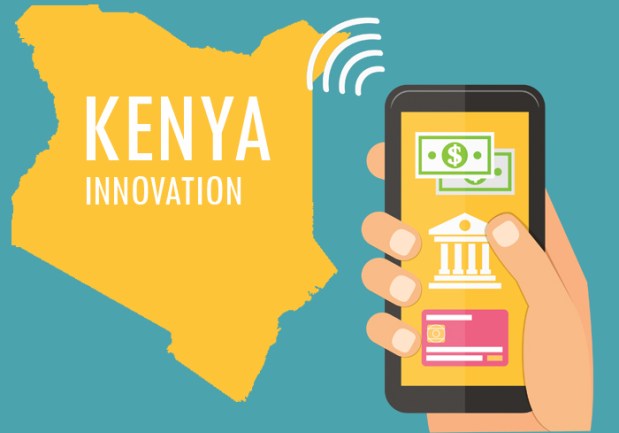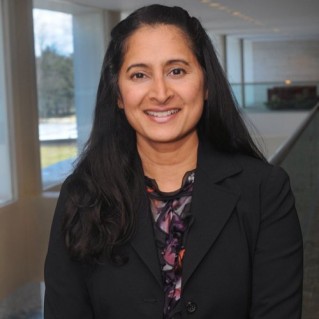How MasterCard Will Bring Financial Services To East Africa

There is no shortage of efforts to bring financial inclusion to those in developing economies who lack access to basic financial services. Most have failed for one very important reason – they’ve been unable to scale. The announcement last week of MasterCard’s partnership with The Gates Foundation will address that problem, starting with the launch of an Innovation Lab in the birthplace of the region’s most successful mobile money scheme – Kenya. MasterCard’s Executive Director of Public-Private Partnerships, Tara Nathan takes MPD CEO Karen Webster inside MasterCard’s plans to create, enable and scale financial solutions that will first impact the lives of the 100M people living in East Africa, and then the billions around the world who will be able to benefit from the foundation that they are creating.
There is no shortage of efforts to bring financial inclusion to those in developing economies who lack access to basic financial services. Most have failed for one very important reason – they’ve been unable to scale. The announcement last week of MasterCard’s partnership with The Gates Foundation will address that problem, starting with the launch of an Innovation Lab in the birthplace of the region’s most successful mobile money scheme – Kenya. MasterCard’s Executive Director of Public-Private Partnerships, Tara Nathan takes MPD CEO Karen Webster inside MasterCard’s plans to create, enable and scale financial solutions that will first impact the lives of the 100M people living in East Africa, and then the billions around the world who will be able to benefit from the foundation that they are creating.
KW: Your role at MasterCard is about developing partnerships with the international development community with a focus in particular on financial inclusion. The recent result of your work is a new innovation lab that you’ve opened in East Africa that has the potential to affect many millions of lives globally – 100 million, as was indicated in the announcement. There are a lot of things that I’d like to talk to you about today, starting with the location of the new lab, Kenya. Kenya is the birthplace of mPesa, which as we all know is one of the most successful mobile money initiatives of its kind. Is that why you chose Kenya?
TN: For us, first and foremost, our intention was to be located in the market of the people we seek to serve. MasterCard Labs as a principal tends to take a customer-centric approach to product development, starting with identifying the problem we need to solve and looking at the gap we’re trying to fill. In this case, we’re looking to innovate new solutions and services that serve the poor with a focus on East Africa.
Secondly, Nairobi emerged as a great hub because of the great access it has to talent, but also, yes, the enabling payments environment.
KW: So let’s talk a little about the problem, and that is access to financial assets and resources. Certainly it’s a problem that lots of people have tried to solve in earnest over the last number of years. As MasterCard and the Gates Foundation, your partner in this effort, were thinking about launching this lab, what were the things that were most important to you in establishing this asset?
TN: I think for us the primary motive is scale. We don’t want to be doing small pilot projects or hobbies – everything we do has to achieve scale. As you pointed out, our objective is to be able to serve via this lab an incremental 100 million beneficiaries or consumers. When I look back and do an assessment of the various pilots and programs that have not worked or stagnated, to me one of the key things that jumps as a cause for that is a lack of interoperability.
For us, our products and solutions, which is the hallmark of the MasterCard method, all starts with an understanding that they’re built on platforms that leverage common, universal standards and protocols. We want to leverage open-loop types of constructs that enable rapid expansion of ecosystems, bringing in all of the local available players to create scale. In my opinion, another key challenge of some of the plays that have failed to date have been because they failed to take a human-centered design approach, and they didn’t have relevant use cases for the populations they were trying to serve. In a lot of cases, they were enabling point-to-point, person-to-person transfers – you couldn’t really pay a merchant or a relevant bill you had, or your school fees.
One of the key approaches that MasterCard Labs takes globally and will look to apply in this case is that human-centered design approach that starts with the characteristics of the individuals we’re trying to serve, what are their needs, and how we address those needs.
KW: So the needs are obviously so great, and there are so many different places to start. Where will you start?
TN: If I had the exact answer and knew the exact solution, we’d be building it right now. A big part of how we will start will be by listening – listening to the local market, the experts who have gone before us and the government actors in the market and developers who have tried and failed or tried and succeeded. That will be a huge part of what our first step is – understanding the demand part of the equation.
Out of this lab, we hope those solutions will emerge. Once we understand what those demand-side characteristics are, the lab will try and test. It’s really about understanding what the needs are and leveraging this process to see how quickly we can come to meaningful solutions that address those pain points.
We all know what the pain points are in academics, product development, and banking. We don’t know a lot of them, but we know some of them. We know, for example, that giving remote micro-merchants the ability to have an effective, efficient supply chain is an issue.
I think what this lab will do is focus on a wide-range of solutions – not just products in the traditional sense. It could be technological solutions – user interfaces, technology solutions for given paint points. It could be product constructs, it could be new business models to address the needs of the poor. It could be solutions that help micro-merchants make payments more efficient for them, or make their supply chain more effective so they’re more efficient.
There are many, many ways we hope this lab will address these problems.
KW: Will you take on the role of education the consumer about the various options available to them that come out of the lab? Is that part of your remit or do you stop there and assume that there is another set of actors who will provide that service?
TN: There is a wide range of actors who will be engaged, not only from the consumer awareness and education portion of the lifecycle, but also from the very beginning – from product innovation to prototyping to developing, etc. The lab’s mandate is to understand the demand side and to move toward actual commercializable solutions. Consumer education will obviously be a big part of that.
KW: What about the assets available to innovators who you’ll assemble as part of the ecosystem built around the lab? What are these assets made available from MasterCard and the Gates Foundation?
TN: First of all, the lab will have access to MasterCard’s 40+ years of payment expertise, technologists and all the experts residing across the globe. Secondly, they have access to the infrastructure – both what MasterCard has already created but also the new work going on with completely new types of products and platforms.
Then, the other great thing that we’ll be creating via this year is a physical location, a convening center, in the local market that will give access not just to developers but also to local academics and government officials, and developers outside of the lab as well.
KW: I imagine you have your plan and milestones to check off along the way. What are some of these milestones you expect to come out of this over the next year, and how quickly do you expect to see the momentum building and solutions actually helping people they’re intended to help?
TN: Our first milestone is to set up the lab with the best and the brightest talent of the region and the world. Who powers the lab will be ultimately defining the success. So setting up the operating construct of it to ensure that it can serve effectively the product and solution innovation ability and outreach capability is critical.
Obviously, or goal is to serve 100 million consumers, but that is somewhere out in the medium to longer term. Along the way, over the next year or two, we’re looking to produce a wealth of ideas that will serve those pain points and turn a group of those into prototypes, and advance some sub-segment of those prototypes into pilots. The ultimate objective is to turn a number of those pilots into scaled solutions with broader applicability across the region.
I’d love to be able to say that one of those scaled solutions will be out the door next year, but it’s a bit too early to tell.
KW: Well, it sounds like the innovators that take advantage of the lab have a running head start. They’re not building from scratch – they’re leveraging important infrastructure and are able to create solutions that use that platform but also solve the needs of those in the market. I would imagine that will accelerate the pace, although things always take longer than we’d like them to.
TN: I think that’s spot on. One of the advantages of the way we’ve constructed this lab is precisely what you’ve articulated. Namely, we are providing not only a physical location but also access to our technologies and methodologies, and staffing the lab with real bodies – experts who are technologists, marketers, product developers, and people who understand the local market and know how to scale products and solutions.
It’s more than just a convening body. It’s actually an enterprise that will be built from the ground up, acting as a standalone business that will have year-end targets just like any other business has to achieve pilots, prototypes and scaled solutions. That will give it the greatest trajectory to have the broadest and most impactful outcome for Africa.

Tara Nathan, Executive Director, Public Private Partnerships, MasterCard, USA
Tara Nathan is the executive director for Public Private Partnerships at MasterCard. In this role, she is responsible for leading the development of partnerships with non-governmental organizations (NGOs), development and multi-lateral organizations to drive electronic payments for the unbanked and underserved. Working closely with MasterCard product teams and regional leadership, the public private partnership team furthers MasterCard’s strategy to diversify our consumer base and to accelerate market transitions from cash to electronic payments.
Prior to this role, Ms. Nathan served as chief executive officer of Mobile Payment Solutions, the MasterCard joint venture with Smart Hub, Inc. In this role, she led the innovation and commercial development of the MasterCard Mobile Payments Gateway, an open mobile payment processing platform designed to facilitate mobile payments for consumers around the world, particularly important for consumers in emerging economies who do not have access to modern forms of commerce. Under her leadership, MPS grew from a fledgling start-up to establish market presence in ten countries around the globe.
Ms. Nathan came to MasterCard after spending seven years heading Citigroup’s Citicards cross-sell business and seven years in the U.S. Foreign Service in Taiwan, Japan and China. She earned a BSFS from the Georgetown School of Foreign Service and an MBA from The Wharton School of Business.
To listen to the full podcast, click here.
